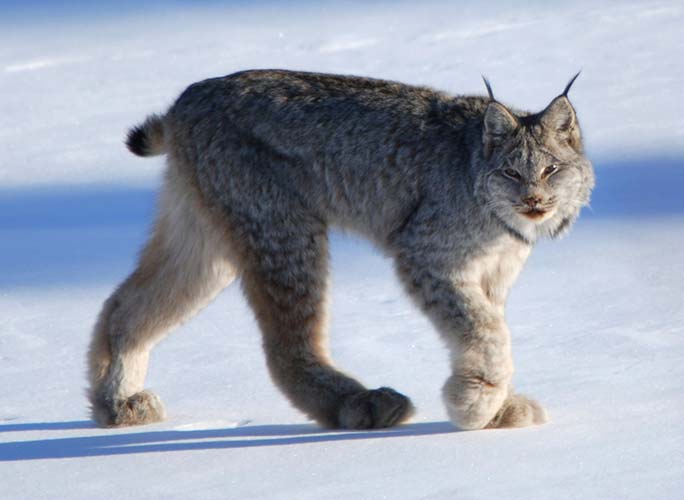Will the Court, for the Fourth Time, Set Aside Village at Wolf Creek Approvals?
- Zaylah Pearson-Good, Communications Manager

- Jun 8, 2021
- 6 min read
Updated: Dec 17, 2021
By Zaylah Pearson-Good
After over 30 years of legal battles, *Friends of Wolf Creek await the judge’s verdict. The outcome of this ruling will either grant or decline Wolf Creek Pass developers access to US Forest Service lands that connect the project site to HWY 160. Without approved access, development cannot continue. *Rocky Mountain Wild, San Juan Citizens Alliance, San Luis Valley Ecosystem Council and supporting organizations combine to form the Friends of Wolf Creek (FWC) coalition.
Backstory
At over 10,000 feet elevation along Wolf Creek Pass, sits a highly contentious piece of property. Nestled between the South San Juan and Weminuche Wilderness Areas, this 300-acre plot offers uninterrupted and safe passage to a variety of Colorado wildlife, including the threatened Canadian lynx. The property is also in proximity to the southern headwaters of the Rio Grande and contains highly productive and rare fen wetland ecosystems.
For over thirty years, out-of-state investors have fought to develop this pristine landscape into a gargantuan “Village” that would support up to 8,000 residents and 1,700 built units, including hotels, shops, homes, and restaurants. The US Forest Service (USFS), of whom manages the surrounding lands, has enabled these development efforts, despite the sensitivity of the surrounding landscape, for reasons that have left the public bewildered. Friends of Wolf Creek (FWC), a team of Colorado environmental groups, has worked tirelessly to give voice to the animals, water, air, soils, and local communities that would suffer at the hands of this aggressive development project. Visit FWC’s “The Issues” page for more details on how the Village would harm human and animal life.
Since the land was first acquired in 1986, under a dubious land exchange between the USFS and Leavell Properties, Inc., ecological concerns voiced by environmental advocates and residents have been ignored. Current property owner and project lead B.J. McCombs has done everything in his will to bypass environmental policies that would prevent large scale Village development. Perplexingly, the USFS has been a steady supporter of McComb’s aspirations, despite clearly going against public interest. FWC’s representing lawyer Travis Stills adds that the Forest Service has “consistently ignored judicial rulings and careful analysis of environmental law,” while simultaneously disregarding public comment. In response, FWC has filed a series of lawsuits against the Forest Service and McCombs to prevent Village construction and keep both entities honest. Attorney Stills is sharing the burdensome workload with Rocky Mountain Wild attorney Matt Sandler. For a complete legal history and timeline, consult FWC’s “A Brief History”.
The Current Case
Since McCombs’s property, known as an "inholding," is situated between two significant wilderness areas, developing the Village requires that the USFS allows for an access road to cut through their lands. The road would connect the McCombs property to Highway 160 and be instrumental to future utility infrastructure and development. In July 2018, the Forest Service announced that they would be granting expanded access, in the form of a road and utility corridor through the National Forest and wetlands, to McCombs’s property. The agency justified their decision by claiming that it is their legal responsibility, under the Alaska National Interest Lands Conservation Act (ANILCA), to permit whatever access the developer requests. FWC attorney Stills explains, however, that ANILCA represents law specific to the state of Alaska and does not bind the USFS to provide whatever access agreement the Wolf Creek developers demands. Instead, Stills asserts that the Forest Service is using ANILCA to falsely represent themselves as a powerless entity. In briefing, even the Forest Service admitted that ANILCA does not provide authority to create a corridor to provide water, electricity, gas, and other utilities required for the sprawling development proposal.
FWC lawyers claim that the Forest Service’s reasoning is flawed because they indeed do have the power to reject McCombs’s proposal if they deemed the project as unreasonable, contrary to law, or oppositional to public interest. In fact, previous judges have already dismissed the Forest Service’s ANILCA argument. Past federal courts dubbed the excuse as an “artful dodge” that abdicates the power Congress gave the Forest Service to manage the National Forest.
In 2019, FWC filed another lawsuit to refute the Forest Service’s decision to permit transportation and utility access through federally managed lands. After over 30 years of legal battles, FWC is awaiting the judge’s verdict. The outcome of this ruling will either grant or decline developer access to Forest Service lands that connect the site to HWY 160. Without approved commercial access, development cannot commence. The results could come any day now, reports Stills. Meanwhile, McCombs enjoys access to the property for non-commercial uses via Forest Road 391, pursuant to the controversial 1986 Land Exchange.
The Desired Outcome
Stills relays that a variety of case outcomes would be welcomed, as long as the integrity of Wolf Creek Pass ecology is maintained. FWC envisions several scenarios whereby McCombs’s property could be returned to federal ownership and oversight, so to prevent future development. This transaction could transpire through either a monetary or property exchange. Or, if the property remains in private holding, McCombs could settle for building a much smaller and less destructive development like the base area that was initially agreed upon in the 1986 land exchange. Lastly, all reasonable scenarios must be fully examined by the USFS and other agencies with jurisdiction and expertise. They should conduct a thorough environmental impact analysis that provides a full examination of impacts and restrictions imposed by the Endangered Species Act (Canada lynx, Rio Grande Cutthroat Trout, American Pika, etc.), Clean Air Act (power plant, road emissions, etc.), Clean Water Act (wetlands, sewer plant discharges, stormwater, etc.), and other laws that protect the fragile environment atop Wolf Creek Pass. Stills is confident that if the Forest Service took the time to do this, they would come to the “inescapable conclusion that nothing is reasonable to be built there,” and therefore, the property “should not be held by private entities.”
Regardless of the judge’s ruling, Stills explains that the courts do not hold all the power in deciding development outcome. McCombs faces huge infrastructural hurdles, such as installing power lines along the high elevation pass, getting water to the development, and building municipal wastewater treatment plants. These details have never been seriously addressed, with the Forest Service accepting “to be determined,” vague descriptions, and fanciful plans such as engineering a methane-fired generating station on site. Not to mention, the developer has to gain approval from Mineral County, the Environmental Protection Agency, and the Army Corps of Engineers, to name a few. Developers should have to prove that the project will have minimal impact on the region’s streams and wetlands. Based on the immense challenges that would need to be overcome, Stills describes the project as being “somewhere between fantasy and insanity.” Even if McCombs gets legal footing to proceed with the Village, a project of this scale in this place is unlikely to succeed in the long-term. It is Stills fear through, that in the process of trying and failing, repeatedly, pristine wilderness will be irreversibly destroyed.
A Beloved Landscape
While the battle to protect Wolf Creek Pass has been long and tedious, Friends of Wolf Creek partners and allies remain committed to protecting this special piece of Southern Colorado. Some advocates have been following and participating in this case for over thirty years and continue to fight for the vital ecosystems and wildlife that make Wolf Creek Pass extraordinary. SLVEC Director Christine Canaly shares that the Wolf Creek Pass case is very close to her heart, as it was the first campaign she worked on as the Council’s Director. Since 2000, she has strived to represent the public’s interest, as well as all the non-human life that thrives in the Wolf Creek Pass area. A shared love for Wolf Creek Pass ensures that the fight to protect it will continue regardless of the court’s ruling. SLVEC, and its partners at Friends of Wolf Creek, will continue to fight for the long-term protection of this pristine landscape for future generations to enjoy.
Take Action
Want to help protect Wolf Creek Pass? Your voice matters, and so do your actions! Support the cause:
-Discuss what you have learned in this article and related resources with your friends!
-Pass on educational materials found in our newsletters and blogs to those in your circle.
-Share information on social media; use #NoPillage.
-Make a monetary contribution to Friends of Wolf Creek: https://www.friendsofwolfcreek.org/.
-Stay informed. We will be posting the court verdict once it is released!
-Know a member of the Forest Service or other local, state, or federal agency? Discuss the case with them; be a moral guide.


















Comments